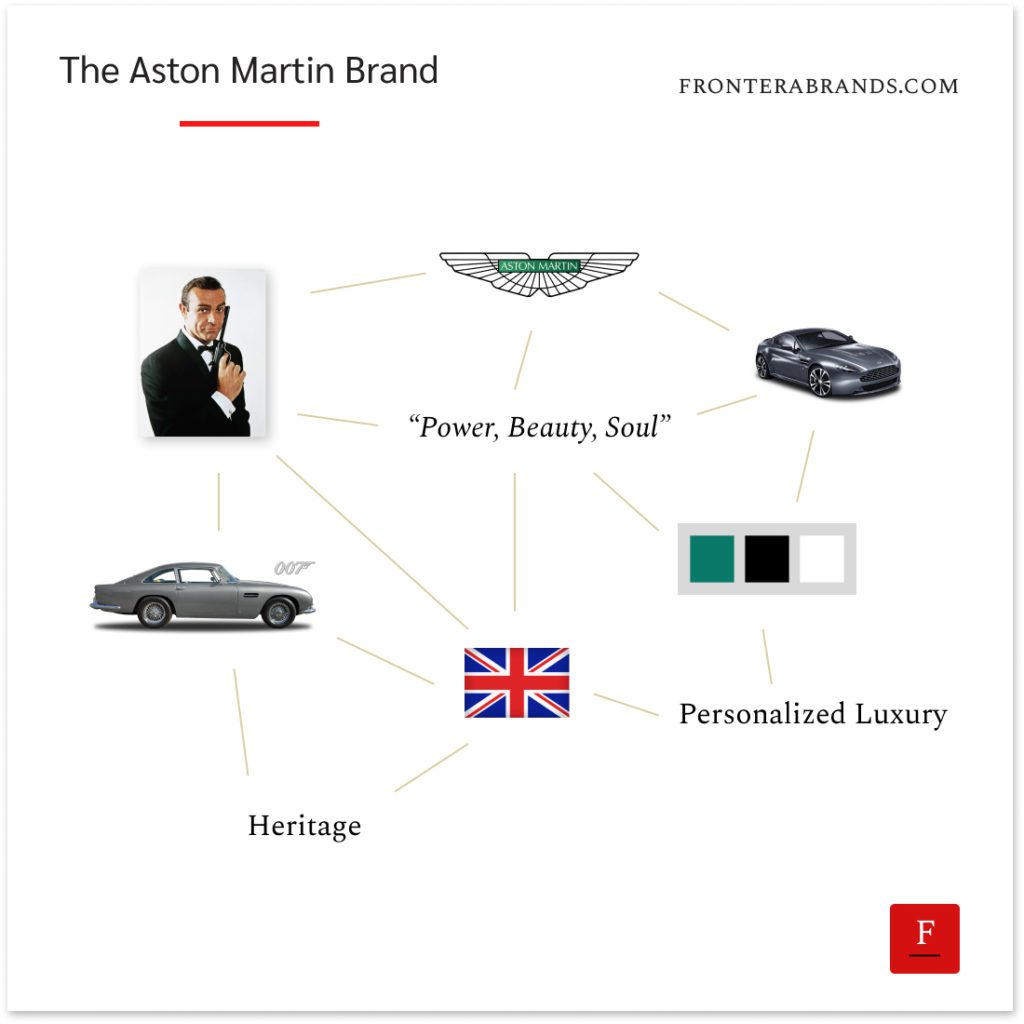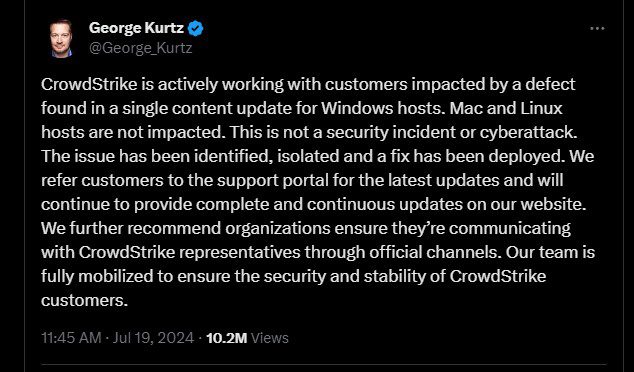In 1963, Aston Martin had to make a challenging decision.
They had a successful racing team.
But the company was struggling financially.
And the costs of maintaining a racing team became unbearable.
So despite their passion for racing, they decided to close the team.
Now, racing is not only a passion project for car brands.
It’s also a marketing channel.
So quitting racing meant they had to find a new (and more cost-effective) way to advertise.
TV advertising was not an option.
It was expensive.
And it was not possible to reach many luxury car buyers compared with the cost.
So what could be a new way to reach wealthy car enthusiasts?
Well, while they were looking for a new channel, the new channel found them.
Special effects expert John Stears was working on the third movie in the James Bond series.
And he wanted to use Aston Martin’s DB5 in the movie as that was the car in the James Bond novel.
Aston Martin was reluctant at first.
But then they realized it could be the new marketing opportunity they were looking for.
Who could be better than James Bond to drive an Aston Martin?
Now, cars have been featured in movies since the 1920s.
But most placements were simply the car appearing in a few scenes.
Together with Stears, the Aston Martin team wanted to go beyond that.
The car could play a role in the movie.
So they added bullet-proof windows, revolving license plates, machine guns, and a passenger-side ejector seat.
And Aston Martin’s specially designed DB5 took on its role in Goldfinger 007.

The movie was released in 1964.
It immediately became a hit.
People had never seen such a car in a movie before.
It was beautiful.
But it also had all these crazy gadgets.
And the cool James Bond (Sean Connery) drove it.
That placement didn’t only increase sales of Aston Martin cars.
It even made DB5’s toys the fastest-selling toy car in history.
Aston Martin brand was known in the UK.
But with the James Bond movie, it became an iconic brand worldwide.
Why associations build the brand
Now, you probably don’t sell a luxury sports car.
And you might not have the budget to make a product placement in today’s James Bond movies.
But there’s a good lesson in the story.
Branding is creating associations in people’s minds.
Aston Martin associated its car with cool, stylish James Bond.
And that association gave the brand recognition that no other luxury car had at the time.
But product placements are only one way to build associations.
Every detail of a brand creates associations in people’s minds:
Examples of Brand Associations:
- Products/services: Associations that come from using a product or service (e.g. drinking a bottle of Coca-Cola or attending a workshop with an agency)
- Hard brand attributes: Associations created with tangible attributes of a brand: logos, colors, taglines, jingles (e.g. BMW’s “The Ultimate Driving Machine” tagline, Google’s logo, Red Bull’s bull, Coca-Cola’s bottle design)
- Soft brand attributes: Associations that come from a brand’s positioning, messaging, and values (e.g. Patagonia’s sustainability, Rolex becoming “A crown for every achievement”, Avis’ 2nd place positioning to prove they try harder)
- News: Associations that come from any positive or negative news about the brand (e.g. Facebook’s privacy issues, Airbnb offering frontline healthcare workers free stays during COVID)

So why does building strong associations matter?
It’s the same reason why branding matters.
You build an image in customers’ minds.
You create a loyal customer base.
And you gain pricing power.
But now the question comes.
How can you build the right associations in customers’ minds even without a big budget or selling a beautiful car?
Three ways to build the right brand associations in customers’ minds:
1. Have an intentional message
The signals you send across different touchpoints shape customers’ perceptions.
And when those signals are not intentional or consistent, you risk creating a perception you don’t want in customers’ minds.
That inconsistency also creates mental tension for customers.
Like what?
One example.
A few years ago, Victoria’s Secret decided to include plus-sized models and underwear.
The brand that represented the ultimate (almost unachievable) beauty was now claiming to represent every woman.

Guess how that ended up?
People got confused.
Is this brand about ultimate beauty?
Or does it represent every woman?
Even though they had good intentions, it didn’t suit Victoria’s Secret.
Sales dropped.
And now they are trying to gain back their image.
But gaining back that image is not easy.
Another example is McDonald’s.
They added salads to their menu to offer healthy options.
But it turns out nobody goes to McDonald’s to eat salads.
Surprise, surprise.
So they had to drop it from their menus.
After all, there is a reason why you don’t see a Rolex ad in a football match.
Football is the most popular sport.
It’s for the masses.
Rolex is not.
So Rolex doesn’t want to build the wrong associations in people’s minds by sponsoring a football club or match.
That’s why they sponsor Wimbledon.
They have an intentional message.
And they keep everything consistent.

The moral of the story?
Have clarity about what you stand for.
So you can be intentional with the associations you want to build.
2. Avoid negative associations at all costs
You heard it on the news.
An issue with cyber security company CrowdStrike took half of the digital world down.
Now, we all know mistakes happen.
But their CEO published a terrible “update” on X.
He didn’t accept the mistake.
He didn’t apologize.
The post was full of corporate mumbo jumbo.

So people got furious.
They published other posts to alleviate the situation.
But it was too late.
10 million+ people who saw that post already associated CrowdStrike with that communication.
Who will believe them from now on if they say they are “customer-centric”?
Remember the contrary example we talked about before.
KFC ran out of chicken in the UK.
But they made fun of themselves by saying FCK and accepting the failure.
People forgot about the failure and remembered that funny advertising.
So whether a mistake, a customer’s complaint, or any other issue.
Be careful about negative associations.
They stick.
Every problem also gives you a chance to turn it around and be remembered positively.
Use it.
3. Say fewer things, more often
There is a guaranteed way to fail in building strong brand associations:
Trying to build too many of them.
And that’s a common problem with many brands today.
The modern world is noisy enough.
And brands add more noise to the noise.
How?
They talk about different problems they solve for different people.
They highlight dozens of benefits.
And they talk about unrelated stuff they don’t truly care about (e.g. sustainability).
Hence they give too many messages to the market.
In the end, nothing gets into customers’ minds.
Customers already see hundreds of emails, Reels, and advertisements every day.
Their minds are busy.
And when you talk about different things all the time, your message disappears among the noise.
We talked about KitKat’s “Have a Break, have a KitKat” campaign.
That has been going on for more than 60 years.
So KitKat repeated the same message in different ways decade after decade.
And that’s how they built (and kept) the association in customers’ minds.
So define your core messages.
And tell them repeatedly on your social media, website, sales presentations, and ads to associate with your brand.
Remember.
The only way to be heard in this noisy world is to say fewer things, more often.
–
Enjoyed this article?
Then you’ll love the How Brands Win Newsletter.
Get the “5 Mental Models to Differentiate Your Business” guide when you join. It’s free.
